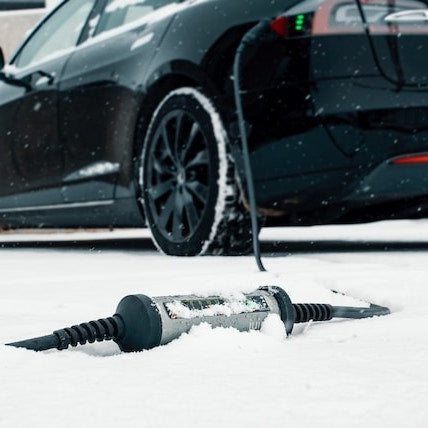How to Boost Your Tesla's Battery Lifespan

Preserving and extending the lifespan of your Tesla's battery involves more than just responsible charging habits. It also entails understanding the science behind lithium-ion technology, your driving behavior, and the influence of environmental factors.
🔋 Unpacking Tesla's Lithium-ion Batteries
Tesla's lithium-ion batteries, consisting of thousands of individual cells, work collectively to power your vehicle. Each cell contains a cathode, an anode, and an electrolyte, facilitating the movement of lithium ions. Over time, due to repeated charging and discharging cycles, physical changes occur within the cells that can impact battery performance and life.

Charging: The Core of Battery Health
-
Avoid Full Charging: Lithium-ion batteries prefer partial charging, rather than full. Frequent full charging can stress the battery, leading to lithium plating and accelerated degradation. Keep daily charging between 20% and 80%, saving 100% charges for long trips.
-
Smart Supercharging: Supercharging is beneficial for its speed, but frequent use can induce more heat and increase degradation. Reserve Supercharging for necessary scenarios and rely more on Level 2 home charging.
-
Battery Calibration: Roughly once a year, allow your battery to discharge to around 10%, then charge it back up to 90%. This process helps the Battery Management System (BMS) accurately calculate range and capacity.

The Impact of Temperature
-
Preconditioning: Preconditioning warms up the battery before driving, particularly beneficial in cold weather. It improves efficiency and reduces battery strain, but should be performed while the vehicle is still plugged in.
-
Keeping It Cool: Exposure to prolonged high temperatures can lead to faster chemical reactions within the cells, accelerating degradation. Park in shaded areas or use Tesla's 'Cabin Overheat Protection' feature in extreme heat.
-
Avoiding Cold Weather Stress: Cold weather increases the battery’s internal resistance and decreases its capacity. If possible, store your Tesla in a temperature-controlled environment during extreme cold.

Driving and Storage Practices
-
Regenerative Braking: Taking advantage of regenerative braking reduces wear on the mechanical brakes and returns energy to the battery. This feature is most efficient in city traffic, and less so at highway speeds.
-
Extended Storage: If storing your Tesla for extended periods, keep the charge level at around 50%. Also, ensure it's connected to a charger if possible, to compensate for the 'vampire drain.'
-
Efficient Driving: Aggressive driving and high speeds can lead to increased energy consumption and more heat generation, which can stress the battery. Driving at moderate speeds with gradual acceleration can improve battery health over time.

Regular Maintenance and Updates
-
Battery Coolant: The coolant keeps the battery at an optimal temperature during operation. Check the coolant level regularly and replenish if needed at a Tesla Service Center.
-
Software Updates: Keep your Tesla’s software updated to ensure you benefit from the latest energy-saving algorithms and firmware tweaks developed by Tesla engineers.
-
Physical Maintenance: Regularly inspect the battery and its components for any physical damage or irregularities. Early detection of potential issues can help prolong battery life.
🪫 Understanding Battery Degradation
Battery degradation is a natural and inevitable process that affects all batteries over time, including the ones used in Tesla vehicles. Lithium-ion batteries, such as those found in Teslas, degrade with each charge and discharge cycle, but the rate of this degradation can be influenced by several factors.
Charge and Discharge Cycles
A cycle is defined as the process of charging a battery from 0% to 100% and discharging it back to 0%. However, most daily driving doesn't constitute a full cycle. If you charge from 40% to 80% and use that energy, you've completed just 40% of a cycle. Over time, as the number of cycles increases, the battery's capacity—its ability to store energy—decreases. This capacity loss results in reduced driving range.
Depth of Discharge (DoD)
This refers to how much of a battery's energy has been used before it's recharged. Frequently discharging your battery to a very low state of charge before recharging can accelerate degradation. To slow this process, it's best to keep the state of charge between 20% and 80% for regular use.
State of Charge (SoC)
Keeping a lithium-ion battery at a high state of charge for extended periods can lead to faster degradation. This is why it's not advisable to charge your Tesla to 100% unless you need the full range for a longer trip. Likewise, leaving the battery at a very low state of charge for long periods can also harm the battery's health.
Temperature
Extreme temperatures, both hot and cold, can accelerate battery degradation. High temperatures can cause the electrolyte inside the battery cells to break down faster, while extremely low temperatures can lead to lithium plating. Both situations can cause a permanent decrease in the battery's capacity and, therefore, its range.
Charging Speed
Charging at higher speeds generates more heat, which can lead to faster degradation. That's why frequent Supercharging might accelerate battery wear over time. Slower, Level 2 charging is typically better for battery health for regular charging.
Calendar Aging
Regardless of use, batteries degrade over time. This type of aging occurs due to the chemical reactions within the battery, which continue whether the battery is in use or not.
It's essential to remember that degradation doesn't occur at a constant rate. Batteries typically degrade faster during their early life and then continue at a slower, more linear rate. Most Tesla owners see a degradation of about 5% after the first 50,000 miles, after which the degradation curve flattens out. However, this greatly depends on the care taken over the battery's life.
Conclusion
By understanding the intricacies of your Tesla's lithium-ion battery, employing smart charging practices, and adhering to recommended maintenance guidelines, you can significantly enhance battery longevity. With careful attention to these details, you can ensure that your Tesla delivers optimal performance over the long haul.


